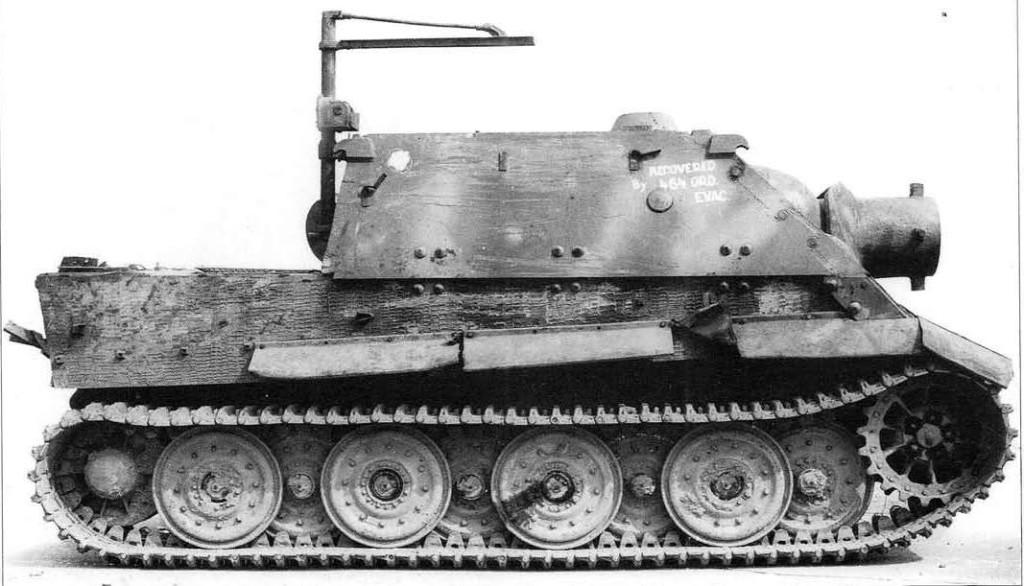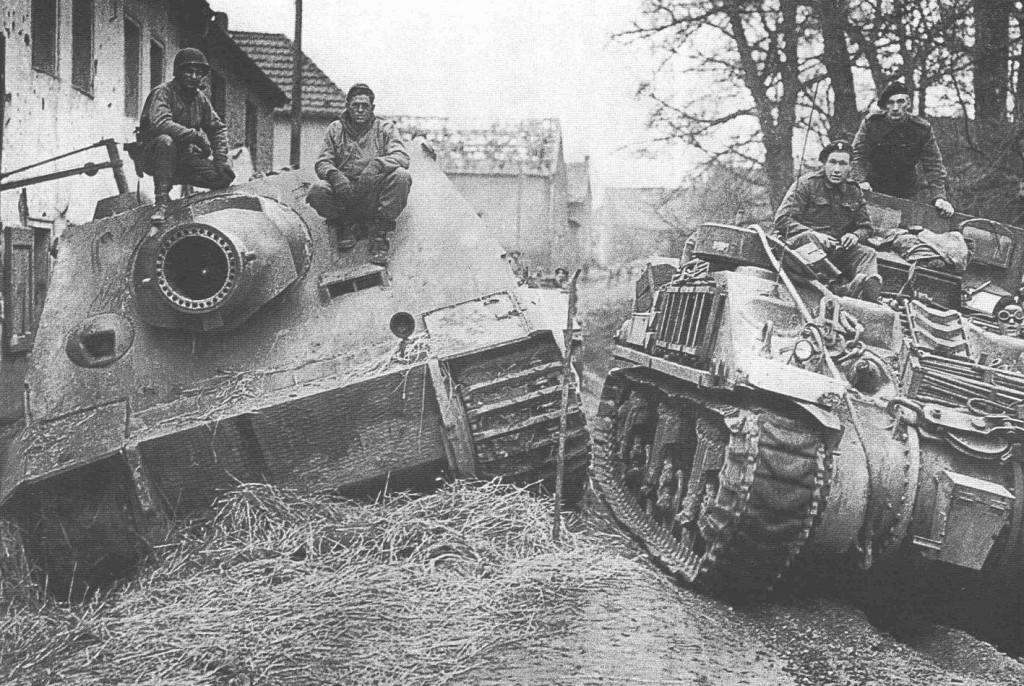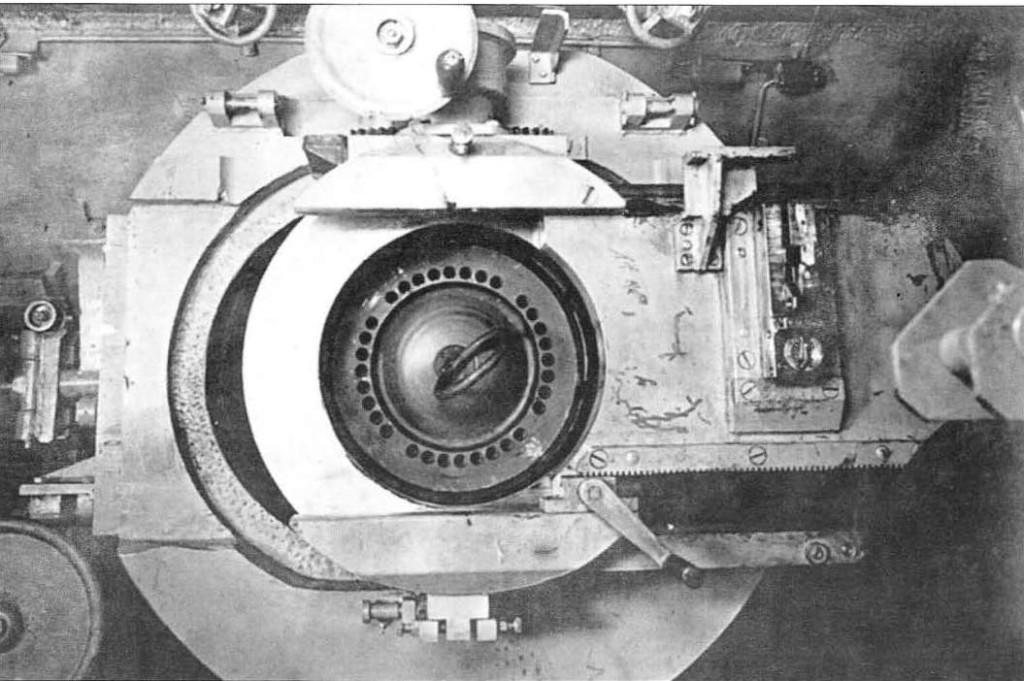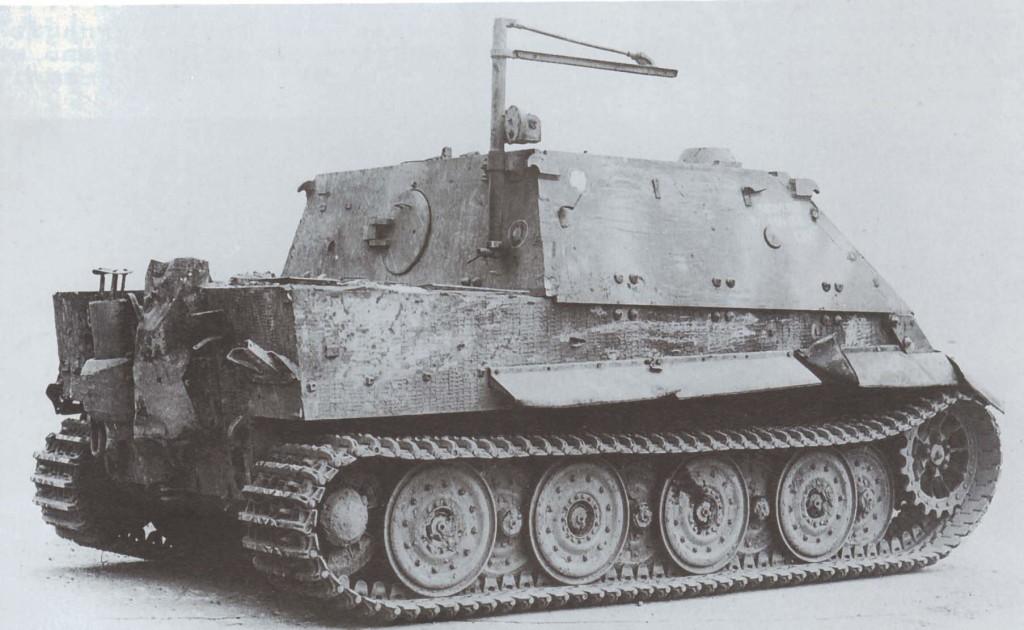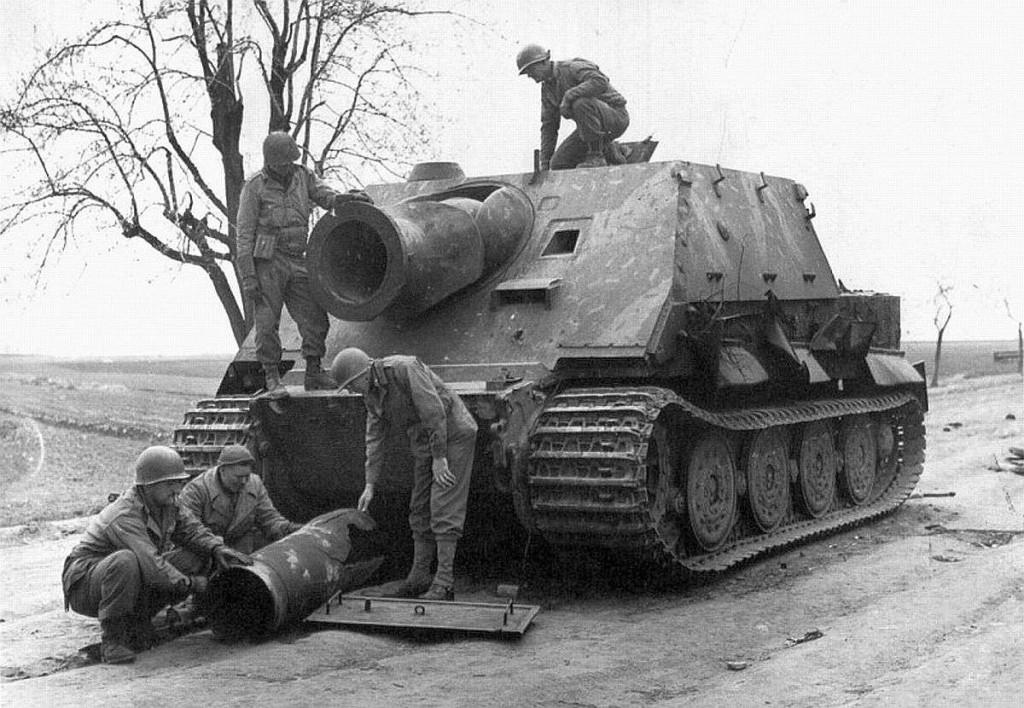Armor:
One of the main characteristics of the Sturmtiger was the armor. The vehicle was intended to fight inside the urban areas and in close range. It had to be heavily armoured and the mass production Sturmtigers had a superstructure with a sloped frontal armor (47°) and 150mm of thickness. The sides and rear were 82mm thick. The hull was similar to Tiger. The hull front was 100mm or 150mm with an additional plate. The weight was pushed up from 57 ton of Tiger to 68 ton.
Una delle caratteristiche principali del Sturmtiger era la corazza. Il veicolo era destinato a combattere all’interno delle aree urbane e a distanza ravvicinata. Doveva essere pesantemente corazzato e le Sturmtigers per la produzione di massa ebbe una sovrastruttura con una corazza inclinata frontalmente a 47 ° e 150 millimetri di spessore. I lati e sul retro erano 82 millimetri di spessore. Lo scafo era simile al Tiger. La parte anteriore dello scafo era 100 millimetri o 150 mm con l’aggiunta di una piastra da 50mm. Il peso venne ovviamente aumentato da 57 tonnellata del Tiger fino a 68 ton.
Weapons:
The main gun was the 380 mm Raketen-Werfer 61 L/5.4. This weapon fired short-range rockets or self propelled projectiles until a maximum range of 6.000 metres. There were two types of rockets, HE with 125kg of explosive charge or shaped charge, used against fortifications and reinforced concrete (bunkers, ecc.). The main characteristic of tube launcher / gun was the gas or gun tubes. These tubes allowed the propellant gases to escape when firing. The excessive gases did not enter inside the tank, but they were expelled. The Sturmtiger prototype had only 20 holes. These holes were increased until 32. In some cases, only 31 holes have been indentified and there are images of only 30 or 20 tubes. The production of “Morser” gun wasn’t standardized. In addition some types of counterweights were located at the end of gun tube. The Sturmtiger could carried only 14 rounds of ammo. It was necessary that an ammunition carrier should accompany the Sturmtiger, but only one carrier was built. A 100mm grenade launcher (it fired bounding mines) was installed for close range defence and a 7.92mm MG34 was installed against infantry attack.
Il cannone principale era il 380 millimetri Raketen-Werfer 61 L / 5.4. Quest’arma sparava razzi a corto raggio fino ad una portata massima di 6.000 metri. C’erano due tipi di razzi, HE con 125kg di carica esplosiva e quelli a carica cava, utilizzati contro le fortificazioni e cemento armato (bunker, ecc.). La caratteristica principale del tubo lanciarazzi / cannone erano i piccoli tubi ricavati sul bordo esterno del cannone. Questi tubi permettevano ai gas propellenti di fuggire via durante il tiro. I gas eccessivi non entravano così all’interno del carro, ma venivano espulsi. Il prototipo dello Sturmtiger aveva solo 20 tubicini. Questi sono stati aumentati fino a 32. Ma in alcuni casi solo 31 fori sono stati identificati e ci sono immagini di solo 30 o 20 tubicini. E’ chiaro che la produzione del cannone “Morser” non venne standardizzata. Inoltre alcuni tipi di contrappesi vennero situati alla fine cannone (probabilmente per renderlo più stabile durante il lancio del razzo). Lo Sturmtiger poteva trasportare solo 14 munizioni. Era necessario che un mezzo trasporto munizioni accompagnasse il carro, mane venne costruito solo uno. Un lancia granate da 100 millimetri (sparava bounding mines) venne installato per la difesa a distanza ravvicinata e una mitragliatrice da 7,92 millimetri MG34 fu posta sulla corazza frontale contro gi attacchi della fanteria.
Combat Service:
Sturm-Moerser-Kompanie 1000, established on 13 August 1943, was the first company with the protoype of Sturmtiger. This Kompanie was sent against the Warsaw uprising. Sturmtiger destroyed blocks of buildings and concrete bunkers. In the same time a platoon of Sturmtigers was sent to Western Front too. They were only two vehicle and they were moved to Hungary on 10 September 1944 in support of the Panzer Brigade 109. In December 1944 the Sturm-Moerser-Kompanie 1000 was sent to the Elsdorf-Gemund for the German Ardennes Offensive.
La Sturm-Moerser-Kompanie 1000 è stato la prima compagnia, costituita il 13 agosto 1943, ad avere il prototipo dello Sturmtiger. Questo Kompanie è stato inviata contro l’insurrezione di Varsavia. Qui lo Sturmtiger fu impiegato contro blocchi di edifici e bunker di cemento. Nello stesso tempo un plotone di Sturmtigers è stato inviato pure sul fronte occidentale. Erano solo due veicoli e sono stati spostati in Ungheria il 10 settembre 1944 a sostegno della Panzer Brigata 109. Nel dicembre 1944 la Sturm-Moerser-Kompanie 1000 fu inviata ad Elsdorf-Gemünd per l’Offensiva tedesca delle Ardenne.
A second Sturmoeser-Kompanie 1001 was created by orders dated 23 September 1944, the Commander was Hauptmann von Gottburg. Four Sturmtigers were added to Kompanie 1001 and the company fought during the Ardennes Offensive around Duren and Euskirchen, before the failure of the offensive. On 23 January 1945 the Kompanie was redesignated as Sturmoerser-Baterie 1001 and the number of Sturmtiger increased from four to six. At beginning of February 1945 Sturmoerser-Baterie was at Drolshagen without fuel and spare parts- Crews destroyed three Sturmtigers and one, Sturmtiger 250043, was captured by US 8th Infantry Division on 11 April 1945.
Una seconda Sturmoeser-Kompanie 1001 venne creata sulla base di ordini del 23 settembre 1944. Il comandante era Hauptmann von Gottburg. Quattro Sturmtigers vennero aggiunti alla Kompanie 1001, che combattè durante l’Offensiva delle Ardenne intorno a Duren e Euskirchen, prima del fallimento dell’offensiva. Il 23 gennaio 1945 la Kompanie venne rinominata come Sturmoerser-Baterie 1001 e il numero di Sturmtiger aumentò da quattro a sei. All’inizio del febbraio 1945 la Sturmoerser-Baterie era a Drolshagen senza carburante e pezzi di ricambio – gli equipaggi distrussero tre Sturmtigers e uno, lo Sturmtiger num. 250.043, venne catturato dall’8 Divisione di Fanteria USA l’11 aprile 1945.
Source:
- Chamberlain, Peter, and Hilary L. Doyle. Thomas L. Jentz (Technical Editor). Encyclopedia of German Tanks of World War Two: A Complete Illustrated Directory of German Battle Tanks, Armoured Cars, Self-propelled Guns, and Semi-tracked Vehicles, 1933–1945. London, 1978.
- Jentz, Thomas L., Panzer Tracts No. 8 “Sturmgeschuetz – s.Pak to Sturmmoerser”, Darlington Productions, Inc, 1999.
- Trojca, Waldemar and Jaugitz, Markus. Sturmtiger and Sturmpanzer in Combat. Katowice, Poland, 2008.

